Stevia is a plant that has unique properties and can be the most valuable culture on your site. The fact is that in Stevia contains a substance Stevioside, which gives the sweetness of this grass. Natural sugar substitute exceeds ordinary sugar, which you put in tea, 10 times! It is for this reason that Stevia can increasingly be seen among all the usual mint, chasty and other similar plants. In this article we will try to figure out how to grow stevia, what landing and care rules must be observed.
Stevia - Botanical Description
- Stevia is a herbaceous plant belonging to the Astrov family.
- Stevia, depending on climatic conditions, can grow both an annual plant and a perennial.
- Motherland Stevia consider central and southern America, Mexico. The plant can grow on plain and mountain slopes. In an industrial scale, Stevia is grown in Uruguay, Israel, China, Thailand.
- Stevia received the first botanical description in the 16th century by Botany Stevus, in honor of which the plant and got its name. There are also information that Stevia was named after the Russian botany Stewen H. Kh. In the countries of the former Soviet Union, Stevia received fame thanks to Academician Vavilov N. and, who brought the "Sweet Sheet" from the expedition in Latin America.
- There are many varieties of stevia that are very different among themselves in the structure. But all types of Stevia have a common feature - growth in the shape of a bush. Bushes can be oval, pyramidal, semi-scatter, spherical, cylindrical, conical shape.
- Depending on the variety and gradation conditions, the stevia bush may have a height from 45 cm to 100 cm.
- Perennial Stevia can have up to 80 shoots on one bush. An annual forms of Stevia usually have no more than 18-19 shoots on one bush.
- Stevia leaves are located on the stem alternately, grow either on very short stiffs, or are sedentary. In the sinus of each leaf, you can detect the kidney from which the lateral escape grows.
- At one bush of Stevia, up to 1,200 bright green leaves, which are found from the top and bottom side can be located. The length of Stevia leaves can vary from 8 cm to 3 cm, depending on the variety and climatic conditions.
- Root stevia urine, located pretty close to the surface. In those climatic zones where Stevia cannot winter, the plant is grown as annual. Roots can be digging and saved for landing next season.
Stevia - benefit and harm
Useful properties of Stevia
Before starting to list the useful properties of Stevia, consider the chemical composition of this plant:
- vitamins: A, C, D, E, Groups in;
- minerals: potassium, calcium, magnesium, selenium, chrome, zinc;
- formic acid;
- coffee Acid;
- humic acid;
- glycosides;
- flavonoids;
- a large number of amino acids;
- essential oils.
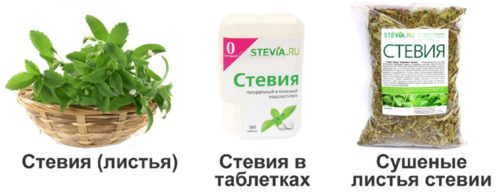
Many different studies have been conducted confirming Stevia's ability to positively affect the work of various organism systems. Consider what benefit can "sweet grass" can bring for a person:
- regular use of Stevia in food can reduce blood sugar levels. Such an assumption was confirmed as a result of scientific research in 2005 and 2010. Thus, people suffering from diabetes mellitus can use natural sugar-proof without fear of harm health;
- the regular use of stevia in food can contribute to a decrease in blood pressure, stabilize the work of the cardiovascular system;
- there are assumptions that the campferol substance contained in Stevia has an anti-cancer effect on the human body;
- the regular use of stevia in food contributes to the removal of toxins, slags, reduces "harmful" cholesterol in the body;
- stevia leaves also have a pronounced anti-inflammatory effect on the body, which the plant begins to render already in the oral cavity;
- stevia is a plant with a rich chemical composition. Stevia leaves are recommended to enhance the vitality, replenishment of vitamins and trace elements, to strengthen the body's protective force in the cold season;
- folk medicine very often advise the use of stevia to reduce allergic reactions, skin rashes, various dermatological problems;
- stevia is recommended to add to the diet to people suffering from joint diseases. If a long course of non-steroidal anti-inflammatory drugs is appointed, then Stevia will reduce the negative effects of these drugs on the gastric mucosa;
- stevia is an excellent product for people who follow the figure. Stevia leaflets dulp the feeling of hunger, do not fill the organism with "empty" carbohydrates as sugar does. Natural sugar substitute accelerates metabolic processes in the body than it helps intensively undergo weight loss process.
Harm Stevia.
Despite the fact that Stevia has such a valuable chemical composition, has a number of useful properties, the use of this plant in some cases may cause harm. Let us consider these cases:
- stevia is not recommended to eat pregnant women and women, nursing breasts;
- stevia should be completely eliminated from the diet, if the individual intolerance to this product was revealed;
- stevia is known for its ability to reduce blood pressure. People who suffer from reduced arterial pressure should avoid stevia in their diet;
- excessive use of stevia can be fraught with disorders of the gastrointestinal tract;
- enter Stevia in your diet gradually, in small portions. If an allergic reaction appeared in the form of a rash, itching, dizziness, then immediately stop the use of stevia into food.
Photo Stevia
Sort Stevia
Stevia "Landca"
Popular variety Stevia, whose seeds are very often found on sale. In the middle band, Stevia "Landca" is grown as an annual plant. From the moment of sowing to the collection of the first harvest, it takes an average of 16-18 weeks. Passing the rules of care and landing the bush reaches 55-65 cm in height. Numerous shoots are generously covered with green leaves, which retain their sweetness both in fresh and dry.
Stevia "Prosta"
Grade "Uslady" is a very harvest variety of Stevia. With 1 sq. M. You can collect up to 13 kg of crop sweet green mass. The bush usually reaches 40-60 cm. In the middle strip of the stevia of this variety is also grown as an annual plant. From the moment of seeding seeds in open ground before collecting the first harvest, about 16-18 weeks goes. If you grow a stevy, then you can collect the crop in 8-10 weeks.
Stevia "Honey Grass"
The Honey Grass grade can be grown both in the open ground and at home. If you sow seeds immediately in open soil, then the harvest time will come in 16-18 weeks. The leaves of Stevia "Honey Grass" are used both in fresh form and dry. The Stevia contains a special substance that is a natural and useful sugar substitute.
Stevia "Sugar"
Stevia "Sugar" is one of the most popular Stevia varieties. It can be grown in the open soil and at home. With a seaside method of growing the first crop of sweet green mass, you can collect after 9-10 weeks. Under favorable conditions of growth and compliance with the rules of landing with 1 sq. M. It is possible to collect about 1.5 kg of useful crop.
Stevia "Emerald Sugar"
The stevia bush of this variety under favorable conditions is able to reach 80 cm in height. Numerous shoots form a rather empty shape of the bush. Stevia of this variety in regions of a temperate climatic zone is grown as a room plant or an annual. If the rhizome of Stevia to dig up in front of winter, it is successfully saved in a cool room for landing next season.
Stevia "Children's"
The main advantages of this variety are: high yields, resistance to diseases. With 1 sq. M. You can collect up to 6 kg of harvest Stevia. The growing season is from 75 to 90 days. From the moment of sowing until the first harvest is based on an average of 16-18 weeks. Kush Stevia of this variety is a moderately branched, having a compact form. Under favorable conditions, it is capable of reaching 50-60 cm in height.
Growing Stevia.
Planting Stevia.
- Choose a place to land Stevia. If you decide to plant "sweet grass" in your site, then choose the most illuminated, protected from the wind and draft place. If Stevia is obtained in the process of growth a lot of sunlight and heat, then the sugars content will be at the maximum level. In shady places, as well as at temperatures below 20 degrees of heat, the concentration of sugars will be reduced.
- Soil for landing Stevia. Plant prefers to grow on light breathable loams or letters. If the soil is too heavy, clay, then it must be improved by making humus, sand. Stevia also prefers weakness or neutral soils. The perfect pH is 4-5, but when growing at home it is better to use soil with pH 9.
- Time to landing Stevia. Depending on whether the landing will be produced into open soil or a seaside method will be selected, the landing time will differ. Stevia sow in open soil when establishing stable warm weather - the end of May or the beginning of June. To grow seedlings of Stevia can be started at the end of March or early April.
- Selecting planting material. Stevia seeds can be found in almost any store for gardeners. When buying planting material, you must pay attention to the expiration date, as well as read the description of the grade on the seed packaging. If you are going to grow stevia only at home, then choose varieties with compact sizes. Seeds before planting are desirable to subjected to a kind of test, which will allow the "empty" instances to discard. Just throw each seed on the floor from a height of about 0.5 m and watch the trajectory of flight. That seed that will fall smoothly down, most likely has a good germination. If the seaw will smoothly soar from side to the side, then most likely it is "a dummy".
- Preparation of planting material. Stevia seeds are better to prepare for landing to speed up the process of germination. Soak seeds in a small container in warm water for 30 minutes. After that, the planting material is dried to a bulk state.
- Stevia planting technology in open ground. In the middle strip, the seedlings of Stevia are most often grown, which is then transferred to a permanent place of growth in open ground. Consider the features of such a landing. The plot where the plant will be planted, you need to move with special care, remove any garbage, spiral grass, pebbles, etc. Stevia has a superficial urine system, and therefore the quality of the soil should be good. Drop the wells with a depth of about 7 cm and at a distance of 25-30 cm. It is desirable to make about 300-500 grams of humor or biohumus in each well. Stevia seedlings very carefully, not damaging the earthen com, roll up into the well, buried, compact the ground, watered with warm water and mulch the surface of the soil. If you are afraid of frosts in the near future, it is better to cover the young seedlings of Stevia in the open ground by the agriculture for 14-21 days. Put the landing of Stevia into open soil is best in the evening or on a cloudy day.
Care for stevia
In order to collect the maximum crop "Sweet herb", follow some rules for care for this plant:
- watering. It is very important to maintain a sufficient level of soil moisture. Stevia does not suffer even short-term drying of the Earth. But the excess of moisture is also harmful to such plants with a surface root system. Water step 1-2 times a week with soft water. Of course, if the week turned out to be very rainy, it should not be water;
- weeding. Stevia does not like the "Neighborhood" of weed herb. Otherwise, she will begin to wake in front of her eyes. Always watch the cleanliness of the site where the "sweet grass" is planted;
- stealing Stevia. The plant responds very well to complex fertilizers, which can be made 1 time in 10-14 days. You can also use a cowboy solution to maintain the vitality of the plant;
- swimming. To loosen the soil around Stevia should be very careful because its roots are located close to the surface. Such a procedure will allow to maintain the purity and the nearest type of site, and will also increase the access of air to the roots, prevent the formation of the crust on the surface of the Earth.
Reproduction Stevia
Stevia reproduction by seeds
In the climatic conditions of the middle band, Stevia is grown by seeds in a seeding method. If you sow a shift immediately in open ground, then you can not wait for germs.
- Preparation of soil for planting seeds. You can buy a finished earthy mix in the store or prepare it yourself. For the extension of seeds of Stevia, the ground will be perfect, consisting of durren, humid and sand in a 1: 1 ratio of 1: 0.3.
- Preparation of seed fit capacity. You can use containers for growing seedlings, flower pots, drawers.
- Shavei seed planting technology. At the bottom of the capacity, pour the drain layer, and then fill in the prepared soil. Experienced gardeners also recommend sterilizing the soil before planting seeds into it. This can be done, for example, by calcining in the oven. The surface of the soil is smoothed. Prepared seeds of Stevia lay down on the surface of the Earth. They can not be filled with soil. If you decide to fall asleep, the layer should not exceed 30 mm. Moisten the ground from the spray gun. Capacity with stevia seeds must be covered with film or glass and put in a very warm and bright room. Stevia will take up faster if the first time you will freeze it using a lamp for 24 hours a day. The room temperature should not fall below 25 degrees.
- Care for seedling stevia. The film or glass is removed after most of the seed germinates. This should happen approximately 1-2 weeks after landing. War down behind the soil moisture. As soon as 2-3 real leaves appear, Stevia seedlings can be divened. Plants should stand in the brightest and warm place, which is protected from drafts. When Stevia seedlings achieved a height of 12-15 cm, the topping of the top is 2-3 cm. This is necessary to stimulate the growth of lateral shoots. Stevia seedling relates positively to various complex fertilizers, which can be added to the hardened bushes every week.
The reproduction of Steven Steenca
Stevia reproduction with green cuttings is quite popular among gardeners. One "uterine" plant can be grown in the house, which will always give steels for the reproduction of Stevia. Consider the principle of growing stew from a cuticle:
- optimal time for the workpiece of Steenk Steven (Green shoots with leaves) - from the end of May to the beginning of June. If you plan to plant cuttings into open ground, then it is worth the harvest of them from the end of March to the beginning of April;
- cut the cuttings with a strong Stevia, which is already more than 2 months;
- escape is cut off in such a way that the plant remains "Penos" with several leaves. From this "Hemp" new shoots will soon appear;
- to roud a stalk of Stevia can be both in the ground and in water. If you decide to root the stew in the ground, then prepare it as well as for landing seed stevia. For successful rooting, the cutting must necessarily need to create greenhouse conditions and spray up to 5-8 times a day;
- if you decide to root steel stevia in the water, then first prepare a suitable container. The transparent glass jar should be wrapped by any material that will not pass the sun's rays. Capacity fill with sugar solution (in 1 liter of water dissolve 1 h. L. It is necessary in order to prevent contact with the water of the lower leaves on the cutting. To roighten Stevia in water, we also create greenhouse conditions, often spray a plant (it is better to use a sugar solution). Approximately a week later you can see small roots. A week later, they achieved a size suitable for transplanting to the ground. Remember that the straight sun rays are harmful to cuttings when they are trying to root.
Zimovka Stevia
In the climatic conditions of the middle strip Stevia, it does not winter in the ground and, therefore, it is grown as an annual culture. Many gardeners dig up and retain the "sweet herb" rhizomes, since in the first year of growth stevia is not growing too intensively. If the rhizomes are planted for next year, you can grow larger bushes. After harvesting, the rhizomes of Stevia digs together with the land of the earth and put in containers from the ground, then sprinkled with wet soil. These containers can be stored in the basement or on the bottom shelf in the refrigerator. Part of Stevia can be continued to grow at home, as well as used as "uterine" plants for cutting cuttings. In the period from the end of May, until the beginning of June, the rhizomes are planted in an open soil.
Diseases and pests Stevia
Fortunately, Stevia is characterized by good resistance to diseases and pests. However, when growing seedlings, Stevia can face such a problem as a black leg. It is for this reason that the disinfection of the soil does not neglect the disinfection before immersing seeds or steels of Stevia into it. You can hide the ground in the oven, hold some time on a water bath, shed boiling water or shed a heatman solution. In order to protect the plant from diseases and pests in the open soil, try not to perplex Stevia in close proximity to fruit trees and shrubs.
Harvesting and harvesting stevia
For almost all varieties of Stevia, the moment of harvesting occurs after 16-18 weeks from the moment of landing. It is possible to harvest the "sweet grass" in different ways:
- if you use Stevia in the latest form, then just lean the leaflets from the grudge plant;
- if Stevia is growing with you much, then the crop can prepare the future. Most often, the plants are cut off by the secateur at a distance of 5-10 cm from the soil surface, bind to bundles and suspend for drying. But stevia should be dried no more than 12 hours. Otherwise, the risen plant can lose a significant part of its sweetness. The dried stew is grinding in a coffee grinder and stored in a closed container for a long time.
At the end of the summer, the ripening of seeds stevia occurs, which can also be collected and used for landing. Understand the seeds ripe or not, it is possible on a darkened flowerball. Do not miss this moment, as the seeds can quickly burst.
Do not be afraid to grow stevia in my site. This plant will be the safest equivalent of sugar for you, and also helps to improve health. The most important conditions for the full growth and development of Stevia are warmth, humidity and light. Good luck in the cultivation of "Sweet grass"!

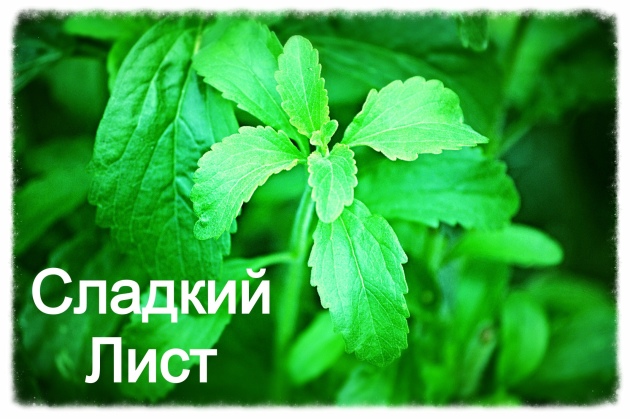
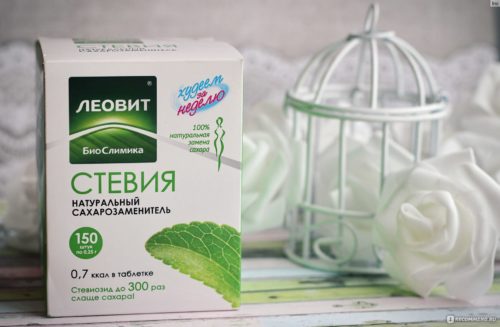
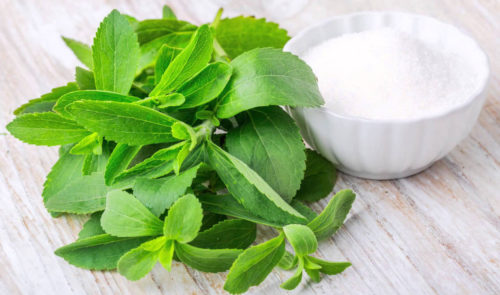
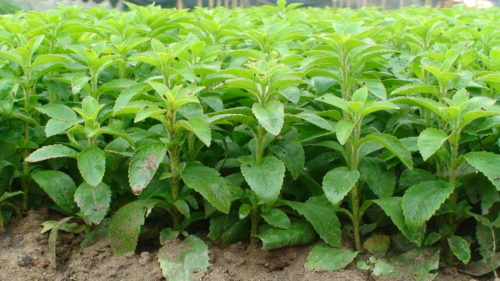
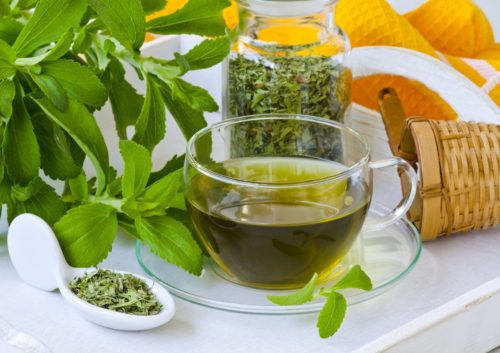
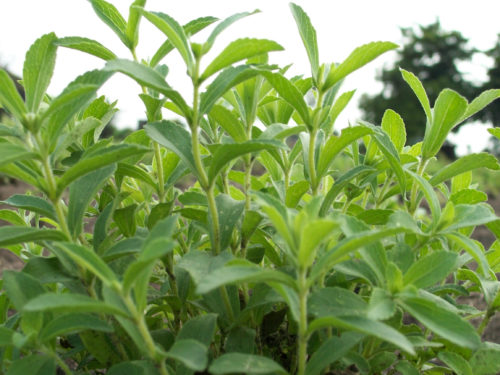
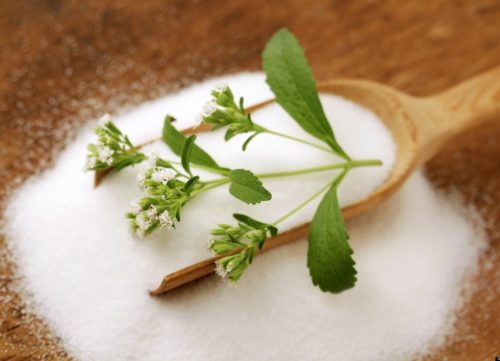
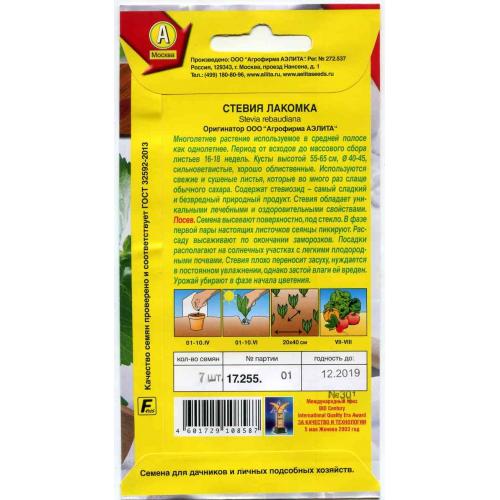
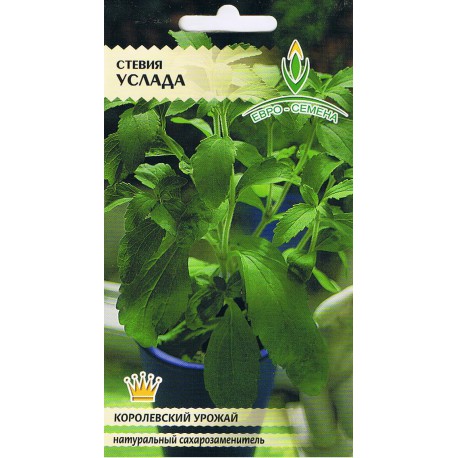
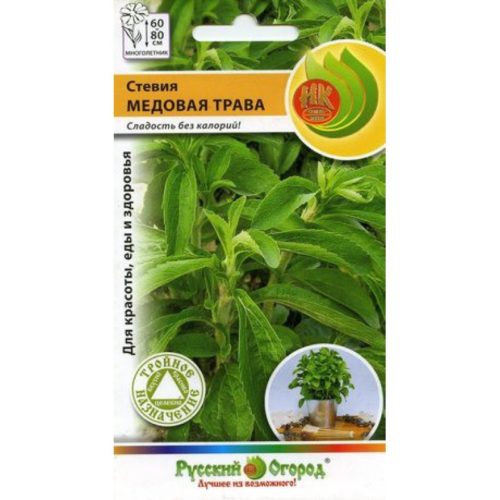
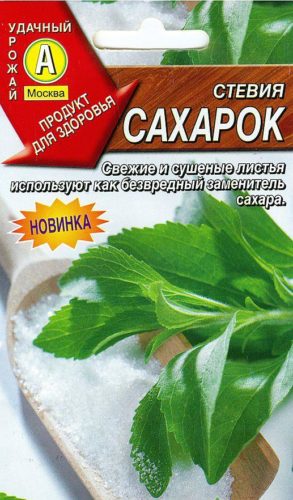
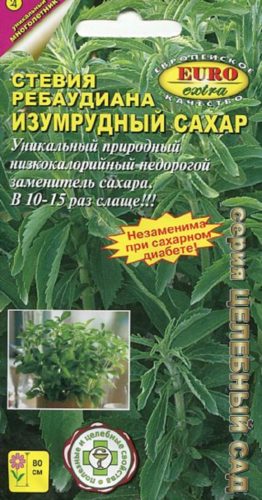
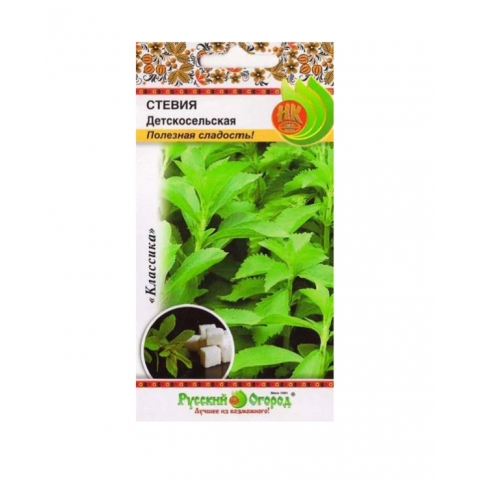
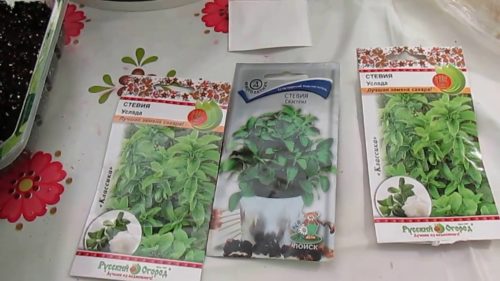
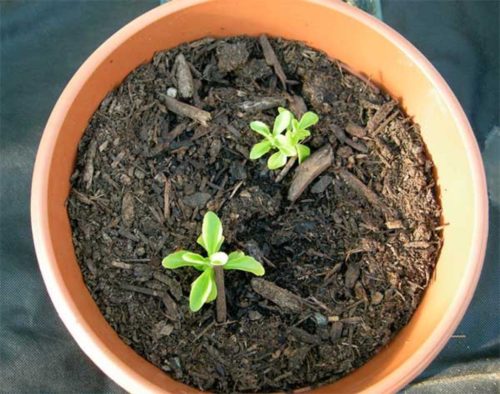
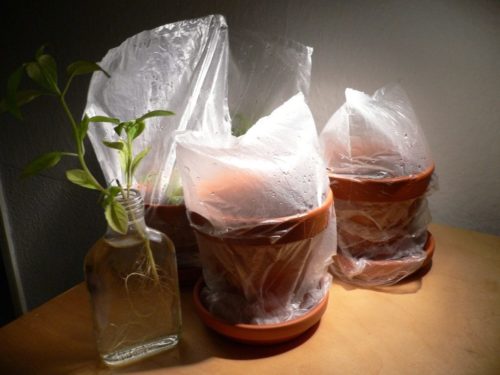
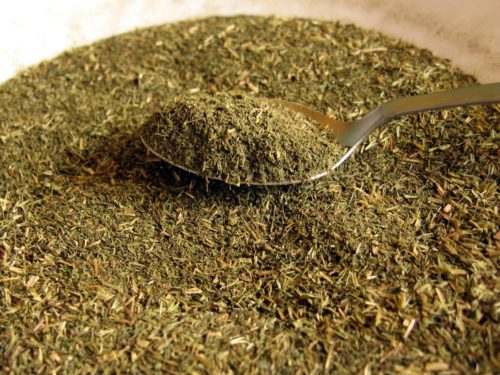












 Start a discussion ...
Start a discussion ...